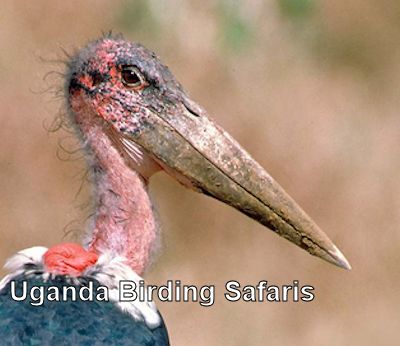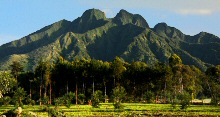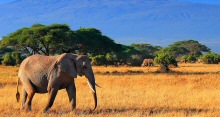 Scientifically known as (Leptoptilos crumeniferus), the Marabou Stork is among the top ugliest birds in the world and its one of the commonest birds you can see during your Uganda Birding Safari. These birds can be seen in and among other places in Kampala the capital city of Uganda.
Scientifically known as (Leptoptilos crumeniferus), the Marabou Stork is among the top ugliest birds in the world and its one of the commonest birds you can see during your Uganda Birding Safari. These birds can be seen in and among other places in Kampala the capital city of Uganda.
Physical Appearance
The Marabou storks are easily noticeable because of their grey legs which are uniquely very long and look white because of the feces deposited on them. On average this bird can grow to an average standing height of 3.19 meter (10.5 feet), weight of 9kg (or 20lbs) a maximum wingspan of 3.19 meters (or 10.5 feet) across. And a bill that measures between 26cm and 35cm (or 10-13.8in). The females are generally smaller than the males.
Their wings are dark grey in color while their necks are pink in color just as their necks and don’t have any feathers. Their foreheads and the bottom of their bills have numerous black spots. Their bills have a color similar to a horn and they are pointed in shape. Right below their bill is characteristic pink wattle that can be puffed up up-to a diameter of between 25cm and 35cm (or 10 to 14 inches).
Their Diet
Marabou storks are carnivores which eat almost everything dead and alive such as fish, lizards, young snakes, frogs, crocodile eggs, insects, young crocodiles rats, birds and mice,.
They normally follow vultures and pick any meat that the vultures drop.
They also have a tendency of living with big mammals and are usually seen eating the insects (such as ticks) that fall off the bodies of these animals.
They also love eating decaying flesh of dead animals
Where to see the marabou stork
The native habitat of the marabou stork is the African continent and this is because of the too much exposed waste dumped nearly everywhere. they love open savannas, lake shores and swamps, not forgetting fishing communities. They can easily be seen in nearly every African country including Uganda, Tanzania, Angola, Kenya, Benin, Northern Cameroon, Sudan, Somalia, Botswana, Sierra Leone, Burkina Faso, Mozambique, Burundi, Niger, Central African Republic, Zimbabwe, Chad, Togo, Congo, Rwanda, Senegal, Cote d’Ivoire, Namibia, Democratic Republic of Congo, South Africa, Ethiopia, Swaziland, Gambia, Nigeria and Ghana among others
Reproduction
They Breed in the dry season especially when the water levels have reduced and it’s easier to catch fish plus small birds. They live in groups of at least 20 pairs and as large as many hundreds. The males usually form a territory before welcoming courting females. Before long, the courting pair begins constructing their nest up in a tree or on a cliff side or up on buildings using sticks. In the nest the female will lay 2 to 3 eggs.
Within 29 to 31 days the eggs will hatch into eggs. Between 13 and 15 weeks the little chicks will be ready to fly and of the 3 chicks normally one makes it to this point. And by four years the chick will be sexually mature.
Common Behavior
The marabou stork shows off its dominance by inflating its air sac, which behavior also helps it to regulate its body temperature.
These birds which live in large groups of up to one thousand normally congregate late in the afternoon at communal perch and then in the morning when the temperatures have warmed up, they fly. They also have a tendency of splitting the large flock into smaller groups especially when their food sources are reducing.
These birds squirt excrement onto their long legs as a mechanism of cooling their body temperatures.
They also spread their wings to warm up their bodies.
When threatened, they clap their beaks.
When flying they retract they neck.
Lifespan
The marabou stork bird while in the wild can live to as many as twenty five (25) years.
For more information about the birds in Uganda, visit adventureugandasafari.com












